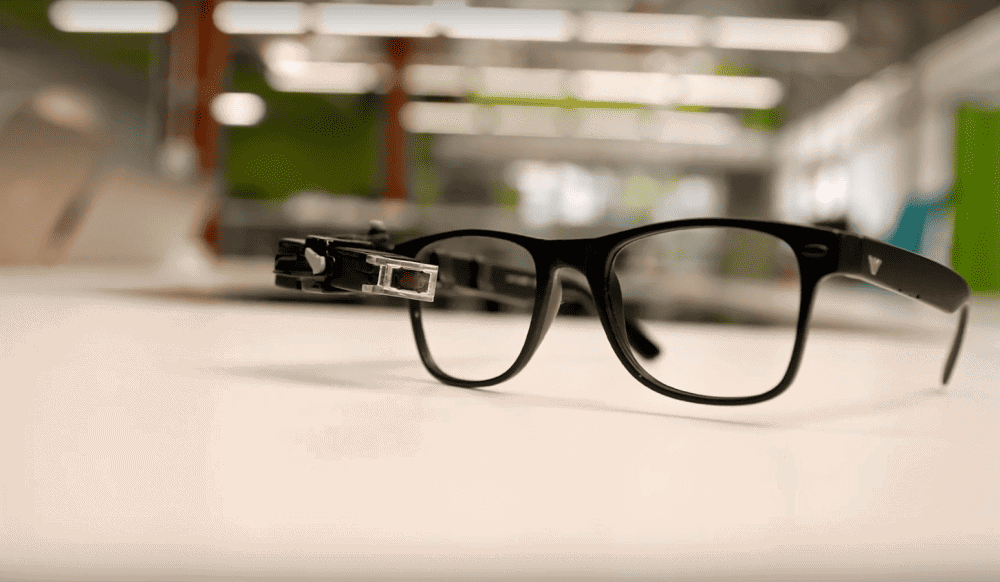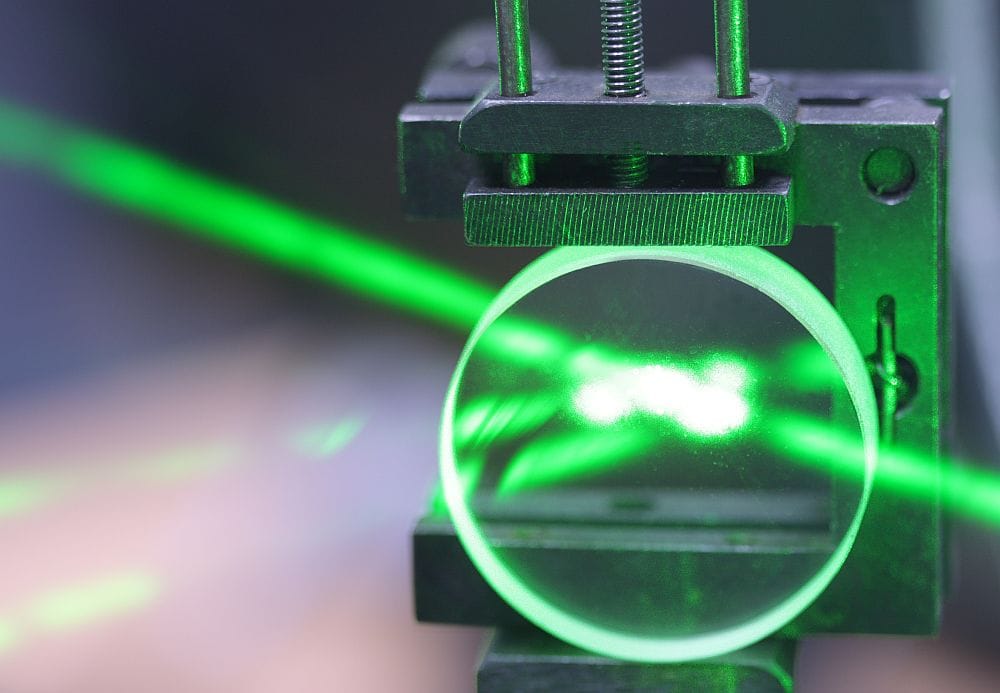
[Image above] The new TranscribeGlass augmented reality device attaches to your glasses and projects real-time captions in front of your eyes. Credit: Jason Carman, YouTube
When the second installment of the Spider-Verse film series came out in June 2023, it quickly became apparent that while the visuals were amazing, the sound mixing was not. The issue of low volume and hard-to-hear dialogue was so widespread that Sony Pictures sent an updated version of the film to movie theaters.
This example of poor sound mixing is not a one-off event—countless articles have been written about the drop in Hollywood audio quality over the past decade. That is one reason why people prefer to watch movies at home, where they can turn on subtitles to compensate for the hard-to-hear dialogue.
In recent years, the expansion of real-time translation apps is bringing the benefits of subtitles to real-life conversations as well. In February 2023, the integration of these apps into everyday dialogue took a step forward with the beta release of a new product called TranscribeGlass.
TranscribeGlass is an augmented reality device that pairs with the transcription software of your choice. It attaches to your glasses and projects real-time captions in front of your eyes. With this design, you can maintain eye contact with the speaker as they talk and witness their nonverbal communication cues, rather than looking away to read the translation on a phone screen.

Credit: Jason Carman, YouTube
The device is the work of two students: Madhav Lavakare of Yale University (undergraduate, ’25) and Tom Pritsky of Stanford University (master’s, ’23).
According to an interview with The Stanford Daily, Lavakare was inspired to create the device in high school after learning that a deaf friend had dropped out due to accessibility issues. He started construction on the first of many prototypes and eventually began raising funding, recruiting mentors, and assembling a small team of employees.
In 2020, Lavakare’s startup was incubated by the Indian Institute of Technology in Delhi, and the company received another grant from both the U.S. and Indian governments. Running the business on his own became “nearly impossible” as a full-time college freshman, however, when he fortuitously met Pritsky in 2021 through a mutual friend.
Pritsky is the founder of Stanford’s club for the Deaf and Hard of Hearing. He has had bilateral hearing loss since the age of three and uses hearing aids and lip reading to communicate.
Lavakare says having Pritsky join the company as a co-founder is “very powerful” because he can provide first-hand experience as a user of the device.
The video below from TranscribeGlass’s Instagram page shows how the captions will look from a user’s perspective. The TranscribeGlass Beta is being sold for $55, and the final version is expected to cost around $95.
Credit: TranscribeGlass, Instagram
While the Deaf community is the main group that TranscribeGlass has pitched its device to so far, “Any setting where you can benefit from an increase in understanding and filter out the noise, TranscribeGlass can help you follow the conversation,” Pritsky says in an episode of the YouTube series Saturday Startup Stories.
Author
Lisa McDonald
CTT Categories
- Glass
- Material Innovations


